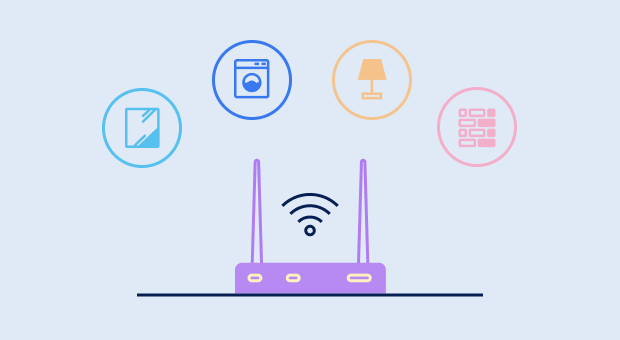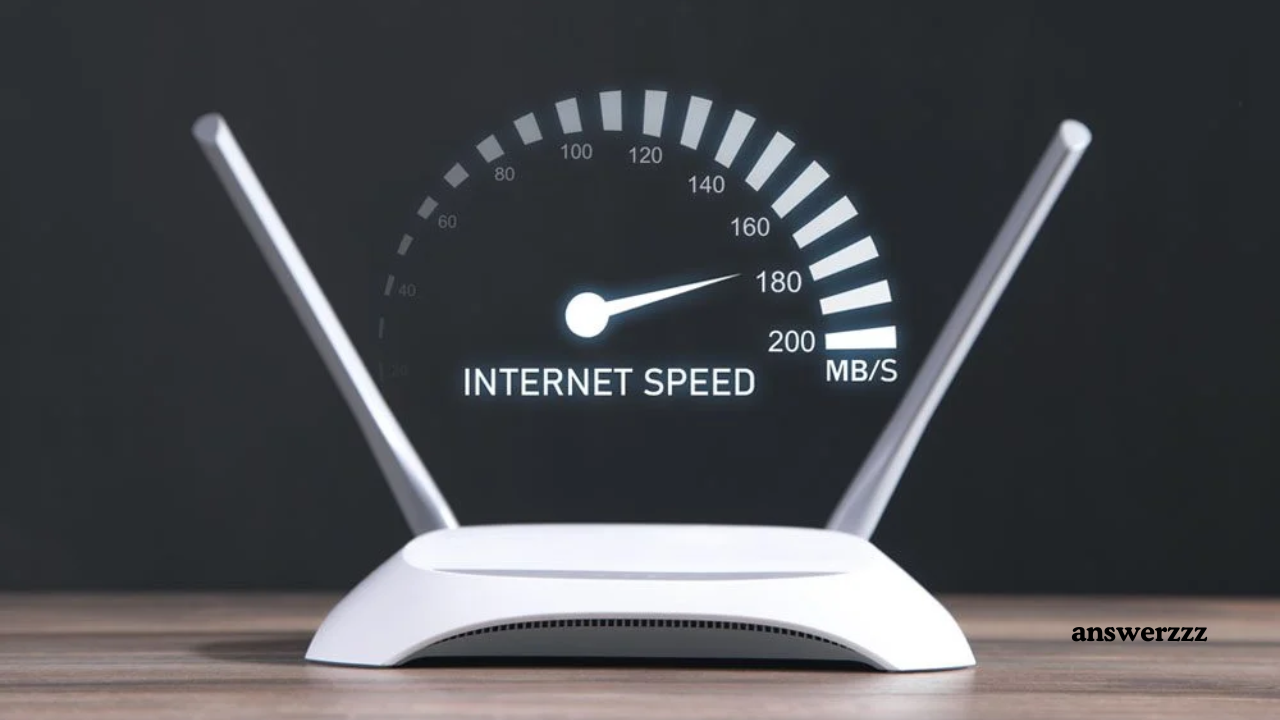In the age of digital connectivity, a fast and reliable Wi-Fi connection is no longer a luxury but a necessity. Whether you’re streaming your favourite show, attending an online meeting, or gaming with friends, nothing can be more frustrating than a slow or laggy internet connection. If you’re tired of waiting for videos to buffer or experiencing dropped connections, this article is for you. We’ll explore the top 5 tricks to boost your home Wi-Fi speed instantly, so you can get the most out of your internet service.
1. Optimize Your Router Placement

The placement of your router has a significant impact on your Wi-Fi performance. Think of your router as a mini radio station broadcasting signals; the closer you are to the “station,” the better your reception.
Why Placement Matters
Wi-Fi signals are influenced by distance, obstacles, and interference. Placing your router in a corner of your house or behind thick walls can reduce its signal strength. Additionally, certain materials like concrete, brick, and metal can block Wi-Fi signals, making it harder for the internet to reach every corner of your home.
Where to Place Your Router for Best Results
- Central Location: The best spot for your router is a central location in your home, ideally elevated (such as on a shelf or mounted on the wall). This allows the signals to spread evenly throughout the house.
- Away from Interference: Avoid placing your router near other electronic devices like microwaves, cordless phones, or Bluetooth gadgets, as they can interfere with the Wi-Fi signal.
- Elevate Your Router: Placing your router at a higher position helps improve signal strength. Wi-Fi signals spread outward and downward, so an elevated position ensures better coverage.
Pro Tip: If you have a large home, consider using a Wi-Fi range extender or mesh network to cover dead zones effectively.
2. Change Your Wi-Fi Channel and Frequency Band
Most Wi-Fi routers operate on two frequency bands: 2.4 GHz and 5 GHz. Knowing which one to use and how to adjust your settings can make a noticeable difference in your internet speed.
Understanding Wi-Fi Channels and Bands
- 2.4 GHz Band: This band offers a broader range but has slower speeds and is more prone to interference, as it’s used by many household devices.
- 5 GHz Band: This band offers faster speeds with less interference but has a shorter range.
How to Choose the Best Channel
Wi-Fi networks operate on different channels within these bands. In crowded areas like apartment buildings, multiple routers may be using the same channel, causing interference and slow speeds. Switching to a less crowded channel can help improve performance.
Steps to Change Your Wi-Fi Channel:
- Access your router’s settings via the web browser (usually by entering
192.168.1.1or192.168.0.1in the address bar). - Log in with your username and password.
- Go to the wireless settings section and look for channel options.
- Choose a different channel (1, 6, or 11 are often the best choices for 2.4 GHz).
- Save your changes and restart your router.
Switch Between 2.4 GHz and 5 GHz Bands
If you’re experiencing slow speeds on the 2.4 GHz band, try switching to the 5 GHz band. Most modern routers allow you to separate these two bands into different Wi-Fi networks (e.g., “HomeWiFi_2.4” and “HomeWiFi_5”). Use the 5 GHz network for devices closer to the router and the 2.4 GHz network for devices farther away.
3. Update Your Router’s Firmware
Updating your router’s firmware is one of the easiest yet most overlooked ways to boost Wi-Fi performance. Firmware is the software that runs your router, and manufacturers often release updates to fix bugs, enhance security, and improve performance.

Why Firmware Updates Are Important
- Improved Speed and Stability: Firmware updates can optimize the router’s software, providing better speed and stability.
- Enhanced Security: Outdated firmware can leave your network vulnerable to cyber-attacks. Regular updates ensure your router has the latest security patches.
- New Features: Some updates may add new features like advanced parental controls or better Quality of Service (QoS) settings.
How to Update Your Router’s Firmware
- Check your router model and version number (usually found on the bottom or back of the device).
- Visit the manufacturer’s website and navigate to the support or download section.
- Search for your router model and download the latest firmware.
- Log in to your router’s settings via a web browser.
- Find the firmware update section and upload the file you downloaded.
- Follow the on-screen instructions to complete the update.
Pro Tip: Some modern routers offer automatic updates, so enable this feature if it’s available.
4. Use Quality of Service (QoS) Settings
Quality of Service (QoS) is a feature found in many routers that prioritizes certain types of traffic. By enabling QoS, you can ensure that high-priority activities like video streaming, online gaming, or video conferencing get the necessary bandwidth for smooth performance.
What is QoS and How Does it Work?
QoS allows you to set rules for your router to prioritize certain devices or applications over others. For instance, you can prioritize your laptop for video conferencing or your gaming console for uninterrupted gameplay. This is especially useful if multiple people are using the Wi-Fi simultaneously for different activities.
How to Set Up QoS on Your Router
- Access your router’s settings via a web browser.
- Navigate to the QoS section (this may be under “Advanced Settings” or “Traffic Management”).
- Enable QoS and add devices or applications you want to prioritize.
- Save your changes and restart the router.
Pro Tip: Some routers have a “Smart QoS” feature that automatically prioritizes traffic based on activity. If available, enable this for a hassle-free experience.
5. Upgrade Your Router or Use Wi-Fi Extenders
Sometimes, the best way to boost your Wi-Fi speed is to upgrade your equipment. If you’re using an old router, it may not be capable of handling higher speeds or multiple devices simultaneously. Upgrading to a modern router or adding Wi-Fi extenders can make a significant difference.
When to Upgrade Your Router
- Old Hardware: If your router is more than five years old, it’s time for an upgrade. Newer models support the latest Wi-Fi standards (such as Wi-Fi 6), which offer faster speeds and better performance.
- Multiple Devices: If you have a smart home with many connected devices, an older router may struggle to keep up. Upgrading to a dual-band or tri-band router can help distribute traffic more efficiently.
Using Wi-Fi Extenders or Mesh Networks
If upgrading your router isn’t an option, consider using a Wi-Fi extender or mesh network to eliminate dead zones:
- Wi-Fi Extenders: These devices amplify your existing Wi-Fi signal to cover areas with weak or no reception.
- Mesh Networks: A mesh system consists of multiple nodes placed throughout your home, creating a seamless Wi-Fi network that covers large areas without any loss of speed.
Pro Tip: Before investing in new equipment, check with your internet service provider (ISP) to ensure you’re getting the speeds you’re paying for. Sometimes the issue lies with the ISP rather than your home network.

A slow Wi-Fi connection can be incredibly frustrating, especially in a world where reliable internet is crucial for work, entertainment, and communication. By implementing these five tricks, you can boost your Wi-Fi speed instantly and enjoy a smoother online experience. Start by optimizing your router placement, switching to the best frequency band, updating your firmware, setting up QoS, and, if necessary, upgrading your router or using extenders. With these steps, you’ll be well on your way to faster and more reliable internet.
Final Tips for Optimal Wi-Fi Performance
- Reboot Your Router Regularly: This helps clear the cache and resolve minor issues.
- Secure Your Network: Use a strong password to prevent unauthorized users from slowing down your connection.
- Monitor Your Network Usage: Use apps like WiFi Analyzer to identify network issues and optimize your settings.
Beginner’s Guide: Tips for Starting Your Own Podcast in 2026
By taking these simple yet effective measures, you can ensure that your Wi-Fi performs at its best, making buffering, lag, and dropped connections a thing of the past. Happy surfing!



